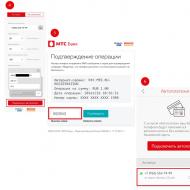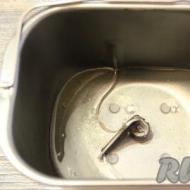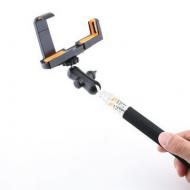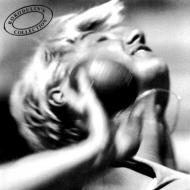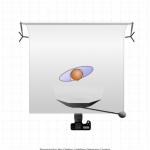
Causes of tire wear on the inside. What can a worn tire tell you? We determine the malfunction by the nature of tire wear. Eating rubber from the inside in front Why eating rubber
Vehicle tires are the only element vehicle which connects it to the road. Often car owners forget that rubber is the most important element of a car that directly affects. But when the tires wear out, every driver regretfully understands that it's time to spend money on buying new tires. . After all, sometimes tire wear can indicate possible faults car. In this case, replacing the rubber with a new one may not help. For example, with some types of breakdowns, your new tires may wear out prematurely in a short time. Let's take a look at ten of the most by which it is quite possible to determine the cause of this wear and tear, eventually finding out the technical condition of the vehicle.
1. Wear of the rubber tread in the center (in the middle)

What it looks like: With this type, as a rule, the tread in the middle of the tire is worn the most (example in the photo).
Cause: If the tire wears the most in the center of the wheel, then this indicates that the central part of the tread had the most contact with the road surface, compared to the tread closer to the edges of the rubber. Therefore, the car on which this rubber was installed did not have sufficient grip with the road surface. Accordingly, the traction of the machine was insufficient.
Most often, such wear indicates that the tire was not properly inflated. That is, the tire pressure did not correspond to the pressure recommended by the car manufacturer. This type of wear indicates that the owner of the car did not check the pressure even with sudden changes in temperature outside, at which the pressure in the tires can change significantly.
The fact is that while the tires are cold (for example, after a frosty night), the tire pressure may be lower than the manufacturer recommends. But after the start of the movement, the pressure in the tires begins to rise from the heating of the air in it. As a result, after a certain distance traveled, tire pressure may exceed the maximum allowable rate recommended by the automaker. As a result, the pumped fluid unevenly adheres to the road surface, as a result of which there will be observed uneven wear tires in the center of the tread.
Some motorists often advise to improve handling and reduce fuel consumption, on the contrary, to pump over the wheels. But this is not justified. Yes, in this way you can reduce fuel consumption a little and even improve handling a little, but in the end you will pay for it with faster tread wear.
That is, saving a little money on fuel, you will pay a lot more.
2. Tire bulging (bulging) and side wall cracks

What it looks like: Cracks and bulges on the side wall of the tires.
Cause: This usually comes from hitting a pothole (hole) in the road, a curb, etc. Usually the tire is well protected from such impacts. But if the tire is under-inflated or over-inflated, there is a great danger that the tire will be damaged as a result of the impact. Large cracks on the side wall of the tire that run along the rim of the wheel indicate that it has been operated with insufficient pressure for a long time. Small cracks on the side surface of the rubber indicate external damage or the age of the rubber (due to age, the rubber compound begins to chemically break down, causing the tire to begin to crack).
A herniated tire looks like a bulge on the surface of the rubber. Most often, a protrusion (hernia) appears on the side wall of the tire. Herniated rubber is associated with internal damage (rubber layer). This usually happens due to a side part hitting a curb, pole, etc. Most often, after an impact, a hernia (protrusion) of the wheel does not immediately appear. That is, after a stroke, you can see a hernia only after a week or even after a month.
If you notice cracks or hernia on tires, then you need to buy new tires as soon as possible.
Remember that it is very dangerous to use rubber with a hernia..
3. Dents in rubber

What it looks like: According to long-term observations, rubber with dents looks like in the photo. That is, the tire has the form of tubercles and dents.
Cause: This type of tire is usually associated with (wear or damage to the elements of the chassis of the car). Due to a malfunction of the suspension, shock mitigation on bumps is insufficient. As a result, the tire experiences an overload from impacts, taking on the maximum load. But the load is distributed unevenly over the entire tread surface. As a result, some areas of the tread take on more load than others, which contributes to the formation of dents and bumps on the tires.
Most often, this appearance of used tires is associated with poor shock absorbers. Although it is worth noting that any parts of the suspension that have failed can cause this kind of wear.
We advise you in case of detection of such deformation of the tires, to make a complete suspension and racks of the car in the technical center. We do not recommend dealing with a similar problem at a tire fitting, i.e. in order to determine the cause of the change in the shape of the wheels. It is not uncommon when tire workers do not know what can cause irregularities (dents, bumps) on the tread surface.
Most often, tire workers claim and believe that this is the cause of improper camber. But this is not a fact. As we have already said, this reason may be due to the failure of the shock absorber (s).
4. Diagonal dent with signs of tread wear

What it looks like: Diagonal dent on the tread surface with uneven wear on the tire surface.
Cause: Most often this problem occurs on the rear wheels, where the camber is incorrectly set. Also, a similar deformation of the wheel can be associated with an insufficient rotation interval, and also, sometimes a similar change appearance tires may be associated with the frequent transportation of heavy loads in the trunk or in the car.
A heavy load can change the geometry of the suspension, resulting in diagonal deformation of the rubber tread surface.
5. Excessive tread wear at the edges

What it looks like: The inner and outer tread has increased wear, while the middle of the tread is significantly less worn.
Cause: This is a sure sign of insufficient. That is, the pressure does not correspond to the norm recommended by the car manufacturer. Remember that this is the most dangerous tire condition. The fact is that with reduced pressure in the tire, it is subject to greater bending. According to the laws of physics, this means that when the wheel rotates, the tire will accumulate more heat. As a result, the rubber will not evenly adhere to the road surface and, accordingly, we will get uneven rubber wear.
Also, insufficient pressure in the tires will lead to the fact that the rubber will not sufficiently soften the blows on the road, which will naturally directly affect the suspension. Over time, this hard impact on the suspension can lead to premature suspension failure, as well as affect the wheel alignment.
How to avoid the problem of under-inflated (insufficient) tires: We again return to the fact that every driver should regularly check the air pressure in the tires, that is, every month or every time after a sharp change in temperature outside. Also remember that cold tires (when parked at night) may show pressures lower than those recommended by the vehicle manufacturer. But during a long trip, due to the heating of the air, the pressure may exceed the norm.
The fact is that this system usually warns you of a change in tire pressure, either when there is a sharp pressure fluctuation (for example, a sharp drop in tire pressure by more than 25 percent), or when there is a significant decrease in pressure for a long time.
In other words, the tire pressure warning system can only be activated when the tire pressure is significantly lower than necessary. This means that you run the risk of driving for a long time on wheels with insufficient air pressure.
6. Convex side tread wear

What it looks like: The side blocks of the tread, usually similar to the plumage of birds, have. The lower edges of the tread blocks are rounded, while the higher edges of the blocks are sharp. Note that you cannot visually notice this kind of wear. This can be understood only when examining the tread from the edge and by touch, i.e. with hands.
Cause: With this type of tread wear, check the ball joints and wheel bearing first.
It is also necessary to check the stabilizer bushing, which, in case of failure, can lead to improper operation of the suspension stabilizer, which will eventually lead to this type of wear on the rubber tread.
7. Flat wear spots

What it looks like: One spot on the wheel has more wear than the other.
Cause: Single spots of increased wear on the surface of the tire are often found when forced hard braking or skidding, or when taxiing out of a situation in order to avoid an impact (for example, if an elk or other animal did not unexpectedly run onto the road). Especially such wear will be visible after heavy braking with simultaneous skidding, if the car is missing.
The fact is that when braking hard and taxiing in order to get away from the impact, a car without ABS is more prone to skidding with locked wheels, which will lead to something like this type of worn spot on the tire tread.
Also, similar stains can appear in cars that have been parked for a long time.
Remember that when you park your car for a long time, you risk tires where wear spots will appear on the tires of your car due to the uneven distribution of the weight of the car on them. The fact is that during parking, the rubber tread does not completely come into contact with the surface and, as a result, a certain section of rubber is deformed from a long parking.
8. Wear on the leading edge of the tread

What it looks like: The leading edge of the tread block is worn and the rear of the tread has sharper corners. Please note that this type of wear may not be visible during visual inspection. Therefore, check the protector with the edge by hand. If you notice that some tread corners are sharper (like hacksaw teeth) compared to other tread edges that are smoother, then this is real wear and not the norm, as many drivers usually assume.
Cause: This is the most common tire wear. Since this type of tire wear is very common and many car owners think that this is the norm, it is not. In fact, this wear indicates that the wheel has insufficient rotation. Therefore, it is necessary.
Most often, the reason is associated with the wear of the suspension elements (salint blocks), with the wear of the ball bearings, and also due to the wear of the wheel bearing.
9. Unilateral tire wear

What it looks like: One side of the tire is worn more than the other.
Cause: Usually, with this type of wear, the cause may be an incorrect alignment of the collapse of the car. This type of uneven wear of the rubber tread is due to the fact that it does not stand exactly on the road surface due to improper wheel alignment.
In order to set the wheel exactly in relation to the road surface, it is necessary to adjust the wheel alignment.
Also, similar wear can occur with damaged springs, ball joints, suspension bushings. In particular, one-sided uneven wear of the tread may appear when transporting heavy loads by car.
In addition, some models of powerful sports cars have a special wheel alignment, which leads to a similar uneven tire wear. But this is rare.
10. Tire wear to indicator

What it looks like: Many tires have wear indicators between the tread. As a rule, these are special inserts that help you determine when it is necessary to change tires for new ones. Usually the height of these inserts is lower than the height of the tread. As soon as the tire tread is equal in height to the wear indicators, it is necessary to purchase.
Cause: Typically, tire replacement should occur after the tread depth is lower than recommended by the tire manufacturer. It's not always easy to tell by eye. Therefore, many tire manufacturers install wear indicators on tires (between the tread). As soon as the tread height wears down to the height that the indicators have, then it's time to change the wheels to new ones.
A rubber tread with a certain depth is necessary in order to divert water from the tire and prevent the car from hydroplaning on wet roads.
If your tires do not have a wear indicator, then you can measure the tread depth yourself in order to understand whether it is time to buy new tires. To do this, you need to use a coin, which must be inserted into the tread with an edge and measure the depth with it. You can read more about traditional tire wear here or check out our infographic.
Attention! For summer tires the minimum tread depth must be at least 1.6, 2 or 3 mm (depending on the rubber manufacturer).
For winter tires, the minimum safe tread height should be at least 4-6 mm.
Automobile rubber, like any thing, has its own specific resource and strength threshold. Therefore, it is not surprising that with intensive use of the car, rubber wears out quickly. Wear can be observed on any axle and side of the car, where there is any malfunction or violation. The normal life of tires is within 4-6 years, taking into account if the rubber has been used carefully and accurately throughout this period.
Today we will find out for what reasons rubber can be eaten? Here are 5 of the most common reasons.
1. The collapse of convergence.
Eating rubber can occur due to the uneven location of the wheels in relation to the body. The camber is responsible for the position of the wheel along the vertical axis, while the convergence is responsible for the placement of the wheels when entering a turn.
Why, with incorrect indicators, after a while it can begin to eat up rubber from all sides and on different wheels. For example, if wear is observed on the inside, then too much inclination has been made. This position of the wheels is called camber. Accordingly, if the outer side is worn, then this is a positive collapse. So the wheels are tilted different sides. Also, if the camber is incorrect, the rubber can eat up on one wheel from the inside, on the other from the outside.

Why do the camber settings go astray? There are several reasons:
Not timely control, long operation of the car on bad roads.
Hitting curbs, potholes, and other potholes and bumps.
After repair of the suspension, replacement of levers, steering, rods, etc.
Deterioration of suspension elements.
bent jet thrust, there is play in the bushings, etc.
Bent bridges, the hull itself.
2. Low or high tire pressure.
When operating wheels with low pressure, accelerated wear begins on that part of the tire that breaks and flexes. With low pressure:
The rim begins to press on the surface of the tire;
The tire structure flexes at the edges.

That is, it is understandable that if insufficient, the side part often wears out, both from the inside and from the outside. With excess pressure, respectively, wear will be observed in the middle of the tire.
3. Uneven pressure.
A common reason for those motorists who do not monitor the car and tire pressure in principle. The uneven pressure of the wheels on the same axle almost always leads to wear on one side or the other, depending on the operating conditions. For example, on the right front wheel the pressure is 1.5 Ba, on the opposite wheel it is already 2.0 Ba. That is, there is a difference, which means that uneven wear occurs. In such cases, often the car begins to "drive" in one of the directions, as a rule, where there is less pressure. There is also a “zhor” of rubber.
4. Incorrect storage of tires in summer or winter season. It is known that it is impossible to store tires one on top of the other, especially if they are stored with dressed disks. Under the pressure of the weight, the tires sag to one side. After a long “laying” in this position, the tires in most cases can no longer be restored.

The correct method of storing tires involves mounting the wheels on edge, that is, as the wheels are on the car, so you need to store them. Periodically scrolling so as not to get stuck. Or better yet, hang it up. If the tires are dressed on disks, then you can lay them flat.
5. Aging, manufacturing defects.
It is rare now that a tire is used beyond its expiration date, rubber tends to wear out sooner from overuse. But, still, do not discard this reason. Check for cracks, pores on the rubber. Violation of tightness, all this directly affects the operation of tires. If the rubber is damaged, moisture gets inside, which eventually leads to the destruction of the metal shell of the tire, the so-called cord.
 Cracks in rubber
Cracks in rubber
According to the standards of manufacturers, the operation of tires whose age exceeds ten years is prohibited.
Of course, this is not the whole list of reasons why rubber is eaten away. There are a number of other problems, but they are less common. So:
Violation of the shape of the disc, for example, after a strong blow to the curb, pit, etc.

Suspension damage and malfunction, for example, a factory or acquired defect, levers.
Damage, for example, bent after a strong impact.

A worn hub, of course, the backlash in this case should be strong, it will be difficult not to notice it. But, nevertheless, when checking by the elimination method, it will not be superfluous to check this node as well.
After the impact, the tire moved off the disk, changed the landing geometry. Drive on the “tavern” or remove the wheels yourself, spin it, if the tire has moved out, it will be noticeable.
Changing the geometry of the body. After a strong impact (accident) or overturning of the machine. You can only determine special tool. It is not uncommon that the reason for the violation of the body geometry is that the machine is simply welded from several parts. That is, a “constructor”, such are common in the Far East, where it is cheaper to overtake a cut from Japan, and then, having welded it, “push” it like a normal car.
Conclusion
As a result, I would like to emphasize the importance of periodic suspension diagnostics, checking the camber, tire pressure. By the way, experts and manufacturers recommend checking the collapse on average every 3,000-5,000 km, given the road surface, perhaps more often.
During the noticed reason, it will protect against premature rubber burning, and also allow, possibly, to save the health, life of the driver and passengers. Good luck on the roads.
Tires can be called link between vehicle and road surface. That is why for many decades the composition and design of tires has been constantly improved. According to the accepted rules, the car is allowed to participate in road traffic only if the wheels are in good condition. Inspection of tires from all sides allows you to get information about their condition, the technical condition of the car and the peculiarities of the owner's driving style.
Why does he eat rubber is a fairly common question that can be found on various automotive forums. Indeed, some time after the discovery of uneven wear, the wheels may be unusable, since severe wear significantly impairs handling, increases braking distances, reduces the stability of the vehicle on the road.
We carry out an inspection
ATTENTION! Found a completely simple way to reduce fuel consumption! Don't believe? An auto mechanic with 15 years of experience also did not believe until he tried it. And now he saves 35,000 rubles a year on gasoline!
The features of the car determine which side the wear is more severe: at the rear or at the front. In order to evaluate not only the suitability of tires, but also to determine the absence of problems with the technical condition of the car, all 4 wheels should be inspected.  In doing so, we note:
In doing so, we note:
- For a car that has a rear drive axle, it is rear wheels will be more worn out, in a front-wheel drive car, on the contrary, the front ones. This is due to the fact that the transmission of torque leads to an increase in the frictional force between the wheel and the road.
- If, for example, a Fiat Albea has disc brakes in front and drum brakes in the rear, the front wheels will be worn out to a greater extent. This is due to the fact that the efficiency of disc brakes is higher. Often, severe abrasion of one or another part of the wheel occurs during braking, since at this moment there is a large load on the axle.
Driving style always determines the degree, the rate of wear. The more during the movement of acceleration and deceleration, the greater the wear.
When inspecting, it should be borne in mind that the cases under consideration determine uniform wear over the entire surface. What eats rubber unevenly? The answer is quite simple - there is a malfunction that leads to this.
It is possible to determine that the wheels are more eaten from the inside or outside only after a fairly long period of time. This is due to the fact that only after a few hundred kilometers this will become visible without the use of special instruments for measuring the tread size.
Wear of steered and driven wheels
 An important point can be called something that eats rubber from the inside and outside of the driving and steered wheels in different ways, even in the absence of a malfunction. This is due to the following points:
An important point can be called something that eats rubber from the inside and outside of the driving and steered wheels in different ways, even in the absence of a malfunction. This is due to the following points:
- At the time of the turn, the steered wheels grip the road surface with the inner or outer side of the tire, which is associated with the features of the steering system. Therefore, Fiat Albea may have tires with uneven wear. However, a similar phenomenon manifests itself after several thousand kilometers.
- The wheels to which the torque is transmitted wear out to a greater extent in the middle - it eats rubber in the place where the load and friction force are concentrated.
If the steered wheels are driving, then the two phenomena are summed up and uniform wear occurs. A similar phenomenon is typical for a front-wheel drive vehicle. What eats uneven tires in this case - the answer lies in the presence of a malfunction.
Frequent problems
When considering why Fiat Albea has tires with varying degrees of wear, it should be noted that in some cases the problem manifests itself after several hundred kilometers of travel. We single out the following reasons for what eats rubber unevenly:

What eats rubber - quite a lot of answers. A Fiat or other car should be checked according to a certain pattern to identify the problem. This is due to the fact that even a simple cause, which will take little time and effort to eliminate, can lead to significant problems.
Pressure unevenness
 The reason, which is the answer to the question of what eats rubber, can be called uneven pressure on wheels mounted on the same axle. In such a case, it is also possible for the vehicle to pull to one side. An example is when a Fiat has one front tire with 1.5 atmospheres and the other with 2.0 atmospheres.
The reason, which is the answer to the question of what eats rubber, can be called uneven pressure on wheels mounted on the same axle. In such a case, it is also possible for the vehicle to pull to one side. An example is when a Fiat has one front tire with 1.5 atmospheres and the other with 2.0 atmospheres.
In order to check this, it is enough to visit a gas station or station Maintenance. After checking the pressure, you need to equalize it, after a while you can check whether the pressure difference is the cause of uneven wear.
The collapse of convergence
On the inside or outside, eating may occur due to the incorrect location of the wheels relative to the vehicle body. In this case, after a long time, severe abrasion can occur on either side. Considering this problem, the following nuances should be noted:
- Camber is an indicator that is responsible for the tilt along the vertical axis.
- Convergence is an indicator that is responsible for the position of the wheel when turning.
 Similar indicators apply only to the front axle. What can strongly eat up the wheels after a few kilometers of the distance traveled?
Similar indicators apply only to the front axle. What can strongly eat up the wheels after a few kilometers of the distance traveled?
If you knock down the camber settings, the cord wears out. At the same time, it eats the cord in different ways, depending on how the reset of the set parameters occurred. After several hundred kilometers, the problem can manifest itself clearly, up to the complete abrasion of the tread to the base of the cord.
Considering such a question, we note the following:
- If it eats up the inside, then this indicates an excessive inclination inward. This situation is called negative collapse. This situation occurs quite often.
- If the outer edge wears quickly, then this is positive wear. In this case, the wheels are tilted in different directions.
After 300-500 kilometers of the distance traveled, even new tire may fall into complete disrepair. However, it should be borne in mind that zero camber leads to uniform, but increased wear. This situation also leads to a significant increase in fuel consumption, as well as an increase in rolling resistance.
Knocking down the settings takes place for the following reasons:

Checking the collapse of the convergence at the service station takes a little time. Modern equipment allows you to quickly and accurately check the collapse of the toe. Experienced craftsmen perform the work of setting the desired parameters in a short time.
 Not only different, but also low pressure can lead to a decrease in the life of the purchased tire. This is due to the fact that tire manufacturers create a design taking into account the recommended operating conditions. If you operate the wheels with low pressure, it begins to wear out quickly. In this case, the load will fall on the part that is not intended for this.
Not only different, but also low pressure can lead to a decrease in the life of the purchased tire. This is due to the fact that tire manufacturers create a design taking into account the recommended operating conditions. If you operate the wheels with low pressure, it begins to wear out quickly. In this case, the load will fall on the part that is not intended for this.
A small pressure indicator determines the following:
- The structure begins to sag at the edges.
- The rim may come into contact with the surface of the tire, which will increase wear.
However, high pressure also causes eating to begin in the central part.
That is why you should constantly pay attention to what pressure. It is worth inflating the wheels to the rate recommended by the manufacturer.
Manufacturing defects
 There is a low probability that a marriage was made during the manufacture and uneven wear occurs due to the irregular shape of the product. That is why you should purchase products only from trusted manufacturers.
There is a low probability that a marriage was made during the manufacture and uneven wear occurs due to the irregular shape of the product. That is why you should purchase products only from trusted manufacturers.
Among the most common problems are the wrong composition of the rubber used, the wrong shape of the court, and other defects. Unfortunately, check the quality of tires without special equipment practically impossible.
Tire aging
Even though rubber tends to wear out before its expiration date, there is a time limit. Aging rubber can cause it to wear unevenly and severely. It is also worth noting that improper storage can lead to rapid aging of rubber.
 All manufacturers indicate how long a product can last under certain operating conditions. It also specifies how it should be stored.
All manufacturers indicate how long a product can last under certain operating conditions. It also specifies how it should be stored.
The aging of rubber leads to the fact that it loses its tightness and the structure becomes porous. After a while, moisture begins to penetrate deep into the structure. Typically, manufacturers use metal cord to reinforce the structure. Moisture leads to the destruction of the metal base. According to accepted standards, a tire cannot be used after 10 years from the date of its release.
Other reasons
The above reasons can lead to severe surface abrasion after a few hundred kilometers. However, some malfunctions can also lead to minor wear, which will appear after several thousand traveled distances. Such reasons include:
- Suspension failure. If camber is associated with the front suspension, then eating out the rear rubber may be due to a suspension malfunction. Incorrect arrangement of some elements can cause the wheels to be located at a certain angle. An example is the violation of the position of the racks, as well as levers and other elements that affect the position of the rim.
- Changes in body geometry after an impact can also cause uneven wear. It is possible to identify such a situation only if certain equipment is available.
- The nature of the disc you are using can also cause the problem in question. For example, after a strong blow, the shape of the disk may be broken.

Types of tire wear
The above causes can also lead to tire wear on the inside. However, they are quite rare. Body geometry changes after a hard impact, suspension failure resulting in wheel tilt is often repaired earlier, modern wheel disks have high strength.
Epilogue
In conclusion, we note that the timely detection of the problem will eliminate the problem and preserve the integrity of the tire. Timely detection of the problem is possible with a constant visit to the service station. When pumping up wheels or conducting suspension diagnostics, you should pay attention to the condition of the tread.
Any experienced car enthusiast knows that for the normal operation of a vehicle, it is not enough just to select the necessary tire, install it on the rim, balance it and drive without the risk of an accident and premature wear. One of the most important actions that a car must undergo is camber and toe adjustment, that is, aligning the position of the wheels in a horizontal direction to prevent excessive rubber abrasion.
For many motorists who do not have sufficient driving experience, the question often arises why it eats rubber from the inside on the front axle. There are several reasons for this defect, and none of them depends on the other, in particular:
- Most frequent problems- these are problems in the convergence and camber of the wheels, and this may have nothing to do with the adjustment, because their position is unstable and it can easily change from a strong shock or vibration effects. In order for the driver to identify a toe and camber problem, he can simply accelerate on a straight, level road and let go of the steering wheel for a few seconds. If the car pulls to the side, this is one of the signs of a violation of this adjustment.
- Also, the problem of wheel wear on the inside can be insufficient pressure in them, when the middle of the sole of contact with the road arches, and the shoulder protectors, on the contrary, wear out faster.
- If a car enthusiast purchases a cheap replica instead of the original tire, then there is a high probability of marriage in the manufacture of the wheel. This alignment, as a rule, causes an uneven distribution of masses, beating at speed, unnecessary vibrations and, most importantly, uneven wear of the protectors.
- Some cars are designed so that the wheels tilt slightly when turning, and engineers deliberately resort to this technique in order to reduce the turning radius of the vehicle. In such cases, the wheel has a contact patch with the road only on one part of the sole, which inevitably leads to tire wear on one side.
- If the tire is used for several seasons in a row, then there is a high probability of its fatigue, which causes plastic deformation of hernias and, as a result, the destruction of the tread from friction on the road surface.
If a car enthusiast notices that the rubber on his “iron horse” is eating up, then in most cases this may be due to one or more of the factors listed above. Of course, there may be more reasons, for example, when a car is systematically overloaded or if it is restored after a serious accident with frame deformation, however, as a rule, it is incorrect wheel alignment that is to blame for the rapid wear of tires.
 Wheel alignment adjustment
Wheel alignment adjustment How does the wear mechanism of the drive front wheels occur?
When the above causes occur, drivers begin to notice how they eat rubber from the outside in front, and the physical process that occurs in this situation is described below:
- The contact of the tire sole does not occur evenly over the entire grip area, but only along one of its parts, and the wheel can not only roll without encountering resistance on its way, but also slip during acceleration, braking or cornering.
- The hard coating acts as an abrasive on the tread and always causes micron layers of the tire's sole to be destroyed during every ride.
- Given that the uneven distribution of the contact surface causes an increase in pressure per unit area, wear in this place is several times more intense due to the concentration of stress at one point, which causes the so-called undercut.
If the main bolster control systems do not work correctly, the driver can see that he is eating the inside of the rubber on the front wheels after a few hundred kilometers. This means that vigilance is never too much, and constant monitoring of the tread height across the entire sole of the tire helps to identify the problem at an early stage and prevent more serious damage in auto.
 Wheel tilt on a turn
Wheel tilt on a turn The main reasons for eating rubber on the rear wheels
In the case when a motorist notices that he is eating rubber on the rear axle, then the reasons may be the same as those listed above, as well as some other technological and operational features of the vehicle.
So, this defect most often occurs due to the following factors:
- Of course, the violation of convergence and camber, as well as for the front wheels, is one of the main reasons for eating rubber.
- It occasionally happens, especially in relation to domestic cars of old models, that rear axle has dependent wheels, and it is a solid beam, it is not possible to check the position of the wheels on which and adjust them. In such cases, the causes of the defect may lie in off-design bends of the most massive beam due to the car falling into a deep hole at speed, and the problem will have to be corrected already on the exhaust stand.
- During tire fitting, masters often show irresponsibility by not using a torque wrench when tightening the nuts on the studs that hold the wheel to the hub. In such cases, distortion can also occur and, as a result, rubber is eaten from the inside in front or behind with all the ensuing consequences.
- Unlike front axle, for the correct adjustment of the rear wheels, it is extremely important to make all control measurements with a full tank, since it is located just behind, and gasoline can weigh up to 50-70 kg. Thus, when adjusting the angle of inclination of the wheels with an empty tank during the next refueling, the car may well sink and the wheels start to eat up.
 Eating rubber in the back
Eating rubber in the back - The last thing that is especially acute for cars with a large trunk, for example, SUVs, minivans or pickups, is the overload problem, as drivers sometimes neglect the permissible curb weight of the car, the excess of which is often displayed on the suspension condition and, as a result, affects the misalignment of the wheels. .
Why does the rubber eat up from the inside of the rear wheel? Although drivers often complain when they eat rubber on the outside of the front axle, the rear axle is considered much more problematic in terms of its maintainability and the ability to adjust without significant spending.
The main mistakes when adjusting the front wheels
Many experienced motorists have encountered such a problem when, after the next scheduled maintenance, the inside suddenly begins to wear out front wheel. This is primarily due to the violation of technology during the adjustment of convergence and camber, since this procedure must be carried out on a special stand using the appropriate equipment and professionally trained craftsmen. If the procedure is carried out with violations, then a result occurs, called critical adjustments, which is expressed in the following criteria:
- Regardless of class passenger car, when adjusting the camber, it is desirable to maintain a negative angle for the front axle, because the mechanism for turning a constant load from the engine brings them into balance in this position.
- When setting the correct toe angle, i.e. the positioning of the wheels in relation to the horizontal surface, on the contrary, it is necessary to give the value only positive values in order to achieve perfect balance while driving at high speed. It is this adjustment that can ensure that the grip patch, if the wheel is not pumped relative to the standard values, will fall on the entire area of \u200b\u200bthe sole of the wheel, which in turn will provide ideal traction and transmission of all torque to the tire without any loss.
 Caster Angle Adjustment
Caster Angle Adjustment - The last important indicator that many tire fitters neglect at all is caster. This parameter is an angular value that characterizes the inclination of the projection of the vertical plane across the wheel with respect to the perpendicular lowered from the point of attachment of the disk to the hub strictly vertically. The importance of the correct positioning of this parameter is obvious, since the automatic return of the steering wheel to its original position is possible only if the correct adjustment is ensured.
- Accordingly, correctly set Tie Rod can guarantee that the wheels will be set strictly in line with the trajectory of movement, and during the ride there will be no effect of their partial drift, which is inevitably accompanied by the erasure of part of the tread.
For summer tires, the critical adjustment is not so obvious due to the increased rigidity of the treads and the operation of the wheel mainly along the entire sole of its support on the ground. In the case with winter tires this parameter often has a decisive effect due to the fact that soft protectors wear out much faster and themselves have a greater depth.
So, after 10,000 km of run, after incorrect adjustment of the toe and camber, the tires may have a difference in the height of the tread on the central and inner parts of up to 5-6 mm, which indicates the need to replace them, since such a defect is not subject to any restoration even after wheel alignment.
 Correct adjustment of toe and camber at service stations
Correct adjustment of toe and camber at service stations If the driver notices one-sided wear on the sole of his tire, this should signal him that he needs to contact a tire service in the near future. Otherwise, eating up the rubber can lead to more serious consequences, up to the formation of a hernia, or a sudden rupture of the wheel, which can be dangerous for the driver or his passengers, as the car loses control.

